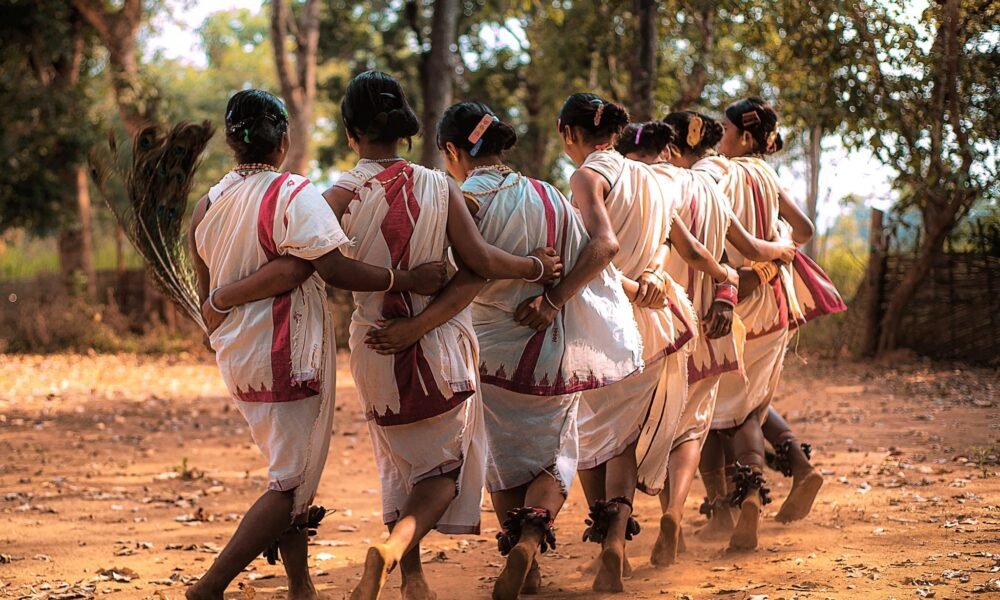Koraput District in Odisha is a region steeped in rich cultural diversity, largely attributed to its indigenous tribes. These tribes, each with their distinct traditions, customs, and ways of life, contribute to the vibrant cultural tapestry of the district. Understanding these tribes offers a deeper appreciation of Koraput’s heritage. Here, we explore six of the most important tribes in Koraput and their unique specialties.
1. Kondh Tribe
The Kondh tribe is one of the largest and most prominent tribal communities in Koraput. Known for their deep connection to nature, the Kondh people practice shifting cultivation, locally known as Podu. They are also famous for their intricate art forms, especially Dokra craft (metal casting using the lost-wax technique). The Kondh are revered for their traditional dance forms like Dhemsa, which are performed during festivals and social gatherings. The tribe’s strong sense of community and sustainable living practices make them an integral part of Koraput’s cultural landscape.
2. Gadaba Tribe
The Gadaba tribe is another significant tribal community in Koraput, known for their unique language, Gutob, which belongs to the Munda language family. The Gadaba are traditionally agriculturists and are also skilled in weaving, producing beautiful handwoven textiles. Their traditional attire, especially the colorful Kerang saree, is a symbol of their rich cultural heritage. The Gadaba are also known for their vibrant Dhimsa dance, a group dance performed by women during various festivals and celebrations.
3. Paroja Tribe
The Paroja tribe, with its sub-groups like Bodo Paroja and Jhodia Paroja, is known for its agricultural expertise. They primarily practice terrace farming, cultivating paddy, millets, and vegetables on the hilly terrains of Koraput. The Paroja are also known for their elaborate marriage rituals and ceremonies, which are often accompanied by traditional music and dance. Their craftsmanship in pottery and basket weaving is highly regarded, adding to their unique cultural identity.
4. Bonda Tribe
The Bonda tribe is one of the most ancient and unique tribes in Koraput. Residing in the remote hills, the Bonda people are known for their distinct and traditional lifestyle, which has remained largely unchanged over centuries. The Bonda women are recognized for their distinct jewelry, made from beads, coins, and brass, and their unique dress style, which consists of a small piece of cloth around the waist and large necklaces covering their upper body. The tribe practices barter trade, exchanging forest products for essential goods, and they hold a deep respect for their indigenous customs and rituals.
5. Duruwa Tribe
The Duruwa tribe is another prominent community in Koraput, known for their agricultural practices and vibrant festivals. The Duruwa people are skilled farmers, cultivating a variety of crops, including paddy, millet, and pulses. They are also known for their traditional music and dance forms, particularly the Ghumra dance, which is performed during harvest festivals. The Duruwa’s deep connection to their land and their reverence for nature are reflected in their rituals and daily practices.
6. Mali Tribe
The Mali tribe, primarily engaged in horticulture, is known for cultivating flowers, fruits, and vegetables. They are the primary suppliers of fresh produce in the local markets of Koraput. The Mali people are also known for their floral decorations during festivals and ceremonies, which add a touch of beauty and color to local events. Their expertise in gardening and their contribution to the region’s agriculture make them an essential part of Koraput’s tribal community.
Koraput District is a cultural mosaic, enriched by the diverse traditions and practices of its indigenous tribes. Each of these six tribes—Kondh, Gadaba, Paroja, Bonda, Duruwa, and Mali—brings its own unique specialty to the region, contributing to the vibrant cultural heritage of Koraput. Understanding these tribes not only offers a glimpse into their way of life but also highlights the importance of preserving and celebrating the rich diversity that defines this region.


